

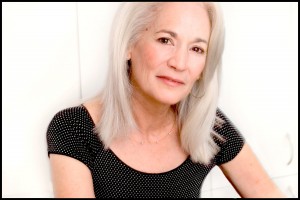 Here’s what Richard Kramer, writer and producer of the TV show Thirtysomething, among others, and author of These Things Happen, a novel he wrote and has adapted for an HBO series produced by Oprah Winfrey wrote about Mary L. Tabor’s sensual, sensitive novel, WHO BY FIRE.
Here’s what Richard Kramer, writer and producer of the TV show Thirtysomething, among others, and author of These Things Happen, a novel he wrote and has adapted for an HBO series produced by Oprah Winfrey wrote about Mary L. Tabor’s sensual, sensitive novel, WHO BY FIRE.
“This brief, elegant, passionate novel accumulates and gathers force like a poem, in which language is compressed and edited and somehow bursts its bounds as it goes along. It made me want to write a book just like it, although I don’t have Mary Tabor’s wisdom and insight and willingness to stay so intently focused. Maybe someday … Until then, I can heartily recommend this, maybe especially to people who haven’t written a novel but who want to, because WHO BY FIRE can show you what a novel can be.”
Mary L. Tabor with Richard Kramer 08/07 by rarebirdradio | Books Podcasts.
Listen to Mixcloud’s interview with Outer Banks Publishing Group author Mary L. Tabor. She discusses her newest novel, Who by Fire, where one of the main characters who died, lives throughout the story.
The interview starts at 50:26 into the broadcast.
Mary L Tabor 03-14-13 by Total Education Network on Mixcloud
Mixcloud connects radio content to listeners more effectively. Mixcloud is re-thinking radio by joining the dots between radio shows, Podcasts and DJ mixes. We refer to them as Cloudcasts – audio shows that are stored in the “cloud” and available to be streamed on-demand.
If you haven’t read the latest review by Small Press Reviews of Outer Banks Publishing Group’s Who by Fire by Mary L. Tabor, view the video and discover some significant revelations why people love, cheat and later regret what they did to a loved one.
Mary Tabor “Who By Fire” Reading from William Holloway on Vimeo.
![]() By Siraj Datoo BuzzFeed Staff
By Siraj Datoo BuzzFeed Staff
Well, yes, because the lovable, popular Geico Gecko has written and illustrated a book called You’re Only Human: A Guide To Life, released today by Workman Publishing for $11.95.
Bloomberg Businessweek online quoted Workman saying the Gecko “has spent the last few years traveling across America, like a modern-day de Tocqueville.” What’s more, it adds:
“He’s a philosopher, an aphorist, a humorist, an artist, a warm companion, a natural storyteller—and, in a grand tradition, a keenly observant and wise outsider who in the course of living and traveling among us has discovered quite a lot about the things that make us human.
“He makes curious and interesting observations on everything from dreams to job interviews to adversity, Twitter to the Golden Rule (it’s not what you think it is) to talking animals: I’m really not sure what all the fuss is about. Lots of animals talk, including humans. The bigger question is, what do you have to say worth listening to?”
See the trailer on YouTube.
http://youtu.be/gnRKMt6LI4k
Available at bookstores everywhere.
________________________________
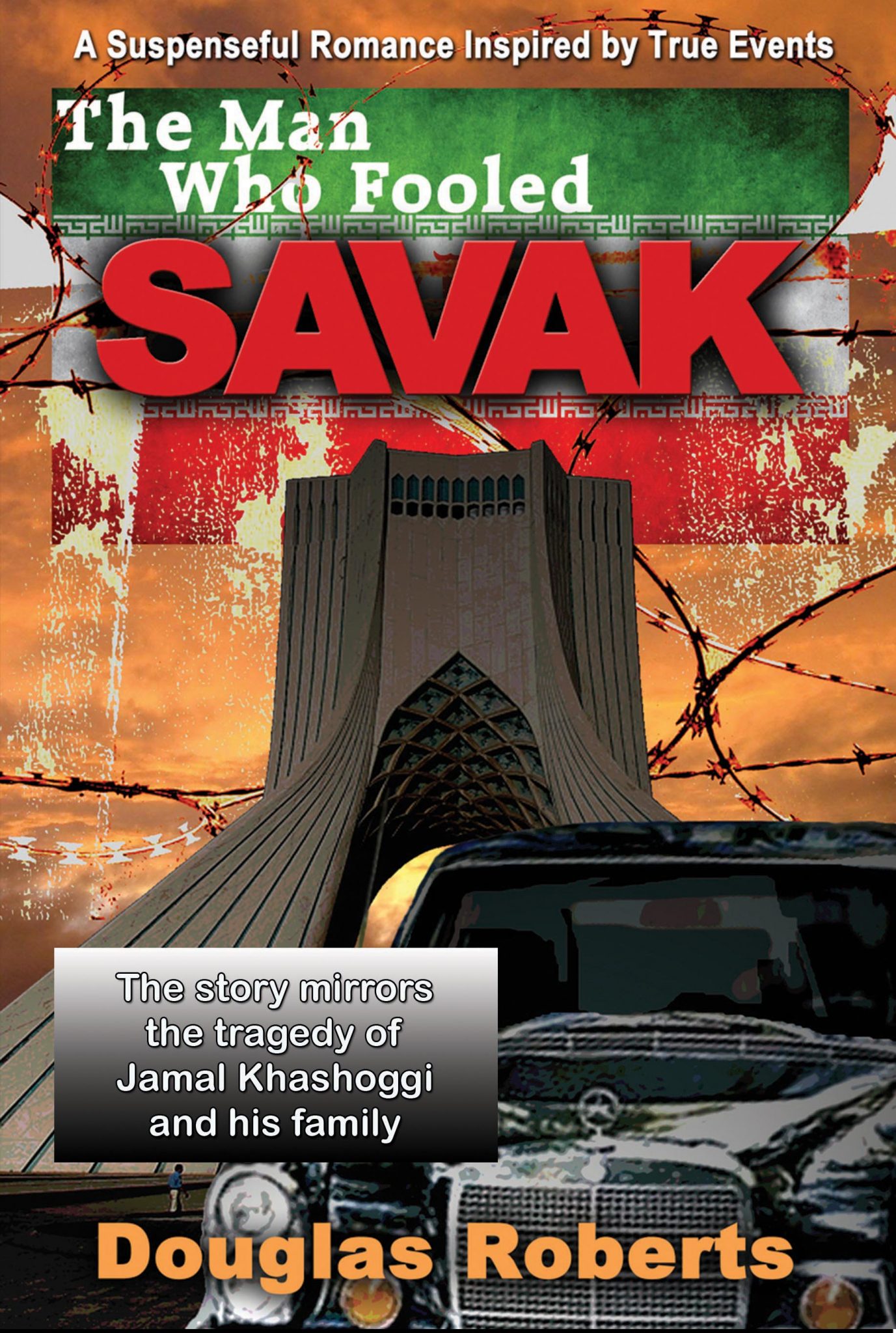
Inspired by true events in the early 1970s, The Man Who Fooled SAVAK captures what it is like to live in a dictatorship with secret police monitoring your every move – an atmosphere of fear that still pervades today in many countries in the Middle East.
Order your copy at a special publisher’s discount price of $12.99, list is $15.99.
Just click on our Bookstore tab and then click on Fiction.
We decided to reprint this interview with Douglas Roberts about what inspired him to write such a book. The interview was originally published June 19, 2011.
_______________________________________
 When Doug Roberts approached us with his manuscript, The Man Who Fooled SAVAK, it was one of those stories that completely engrossed you where you couldn’t put it down until it was finished.
When Doug Roberts approached us with his manuscript, The Man Who Fooled SAVAK, it was one of those stories that completely engrossed you where you couldn’t put it down until it was finished.
Inspired by true events in the early 1970s, The Man Who Fooled SAVAK captures what it is like to live in a dictatorship with secret police monitoring your every move – an atmosphere of fear that still pervades today in many countries in the Middle East.
What makes Doug’s book so appealing is that what he wrote today about events 40 years ago is still going on today in many parts of the Middle East. And all of these events are carefully woven into a love story that will make you fall in love all over again.
Q. The release of your book coincides rather well with Arab Spring. When did you start writing it?
A. In the summer of 2008. A woman I’d met on line named Erica Murray was interested in Iran so I started writing to her about it. I started doing some very preliminary research into the history and politics of Iran in 1971 in order to refresh my memory of things I had experienced when I was in Iran during that time. The book was completely finished several months before the uprising in Tunisia.
Q. Even though that was 40 years ago, there are many common elements with what is happening across the Arab world.
A. Yes, especially the fear people experience when living under an autocratic regime is something I hope I have captured, and as the book proceeds, the breaking out of that fear. Perhaps it will give people hope. Just like in my book, the methods used by various dictatorial regimes to maintain control seem to be taken from a common playbook: trample a free and independent press, keep the people fooled, use an iron fist to silence dissent, eliminate fair trials, use torture to extract confessions – the list goes on and on.
Q. But when you wrote the book, you weren’t thinking about that.
A. (laughs) True! I don’t have a crystal ball and the Arab Spring was as big a surprise to me as the rest of the world.
Q. Can I ask you about one of the characters in your book? Was there really a Junior?
A. Yes there was. I think Junior made the story possible to write. We really did sell our liquor and cigarette rations to him. I recently learned from a fellow who served in ARMISH/MAAG just before I arrived that Junior mostly dealt with the domestic workers, the Iranian nationals who worked at the bachelor quarters where we lived.
Q. I’d like to ask you about another character, Mihan Jazani. She is a historical figure, the wife of the Bijan Jazani who founded one of Iran’s guerilla movements. It appears that she’s a friend of yours on Facebook.
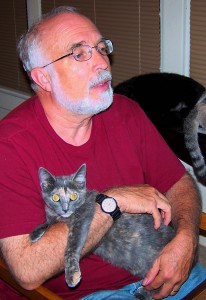 A. (Blushes) Um, well yes…so it would appear. (laughs) Actually, Mihan Jazani doesn’t like Facebook and never uses it. The Facebook account was set up for Mihan by her granddaughter, Aida. Aida and I exchange messages occasionally.
A. (Blushes) Um, well yes…so it would appear. (laughs) Actually, Mihan Jazani doesn’t like Facebook and never uses it. The Facebook account was set up for Mihan by her granddaughter, Aida. Aida and I exchange messages occasionally.
Q. How were you able to remember so much about what happened then? It was 40 years ago after all.
A. I was assisted in several ways. I had some writings I had done about Iran when I was in journalism school at Kent State in 1972. I had a large number of slides that I’d taken when I was there. Those were crucial in reviving old memories. A huge help was finding a 1977 map of Tehran on the (now defunct) Tehran American School website. I was able to use the exact names of places, even street names. The fellow I’d mentioned earlier who told me about Junior had sent me a copy of the ARMISH/MAAG directory, which was very useful. Finally, talking to people I worked with at that time was extremely important, namely Heidi Eftekhar and Barry Silver, who are characters in the story. I obviously couldn’t remember all events specifically, but I found I could generate them as needed by being very specific in my language. I would take seeds of ideas and extrapolate and grow them into full blown events. For example, a certain lecherous officer really did say to Heidi, “I think you’re a woman who needs a lot of loving.” I took that and ran with it. Last, but also important, the Internet was a valuable tool in researching the historical incidents in the book.
Q. So, where does the novel part come in?
A. Some of the human rights related events are novelized, but they’re very accurate in their portrayal of the times. I’ll leave historians to figure all that out. They will have their work cut out for them because I’ve spent a lot of effort weaving the story line into the history of those days.
Q. How close is your character Doug Roberts to the way you actually are?
A. That’s a really good question. (laughs) I had originally intended that Doug the character would be an extreme version of myself. But after having read my book now over and over, I’ve come to see that what’s extreme are the circumstances he’s in. Doug the character is a lot like I was back then: ok in the smarts department, and a little too cocky sometimes. He’s not very romantic or knowledgeable about women, but does all right in spite of himself. (laughs) There’s an element of male fantasy in the book I suppose. In the story, I have two charming female lunch companions in addition to Fari my Iranian girlfriend/fiancée.
Q. But you really were friends with Heidi Eftekhar your co-worker in the story.
A. I still am. Heidi and I communicate regularly by email and her input on the book was immensely helpful. Miss Farou is the fantasy. She actually didn’t like me all that much. (laughs).
Q. I get the impression you had a lot of fun writing your book.
A. It was pretty trippy for me at times. I would totally submerse myself in it. For example, I had written the scene describing how I spent New Year’s Eve in Iran just a couple of weeks after New Year’s Eve in real life. When someone asked me about how I’d spent my New Years, it shocked me as to how much effort I had to put into pulling up what I’d actually done versus what I’d just written. That was a little scary.
Q. What do you think people will get out of your book?
A. I’m sure everyone will get a little something different, but what I’d like for people to take from it is that, like in the story, life may present you with some extreme circumstances. When that happens, keep a level head and your wits about you. Try to see beyond what appears to be happening on the surface. There will always be some good things happening at any given moment. Try to focus on that. To get through your ordeal it’s a good idea to engage all your friends to help you and your faith if you have that. Most important of all: never give up.
The Man Who Fooled SAVAK is available as an ebook on Amazon Kindle and in various ereader formats from Smashwords.com
Outer Banks Publishing Group
ISBN-13: 978-0982993125
ISBN-10: 0982993129
BISAC: Fiction / Espionage
It was the worst two-week killing spree in Ohio’s history. On the night of July 21, 1948, Robert Daniels and John West entered John and Nolena Niebel’s house in Mansfield, Ohio with loaded guns. They forced the family including the Niebel’s 21-year-old daughter, Phyllis, into their car and drove them to a cornfield just off Fleming Falls Road in Mansfield. The two men instructed the Niebels to remove all of their clothing, and then Robert Daniels shot each of them in the head.
Scott Fields of Mansfield, Ohio was so intrigued by this true story that he turned the horrific events into a page-burning novel that you cannot put down until you turn the last page. During a recent book signing in his hometown of Mansfield, Scott was approached by a man he had never seen before. The man introduced himself and Scott’s jaw dropped.
By Scott Fields
Author of The Mansfield Killings
I had just begun a book signing when a dignified, older man walked through the door. He stood in the back of the room as I finished with the person in front of me. He then approached me and shook my hand introducing himself as Roger Winger. I had no clue as to who he was in spite of his obvious pause as he waited for me to take heed of his presence.
“You don’t know who I am, do you?” he asked.
“No, I don’t,” I said. “Sorry.”
“In July of 1948, I saw the dead bodies of the Neibel family lying in a cornfield off of Flemming Falls Road.”
For several seconds I stood there with mouth open trying to comprehend what he had just told me. “What did you just say?”
“I actually saw the dead bodies.”
I grabbed him by the arm and led him into another room. “How could you have seen such a thing?”
“I was six years old at the time. I lived next to the cornfield where the Niebels were found. That day was like any other summer day. I had seen the group of boy scouts marching down Flemming Falls Road earlier in the day. I hardly gave notice because boy scouts on that road was a common sight to see. Later that day, I stepped outside my house to see find police cars, ambulances and even fire engines all up and down the road. Out of curiosity, I walked down to the cornfield. There were men rushing back and forth but seemed to be concentrating on a spot about 50 feet into the field. I cautiously walked through the corn stalks until I was within a foot or so from the spot where the three people had been shot.”
“Did you see the bodies?” I asked.
“Yes, I did. Their bodies had turned white and were extremely bloated.”
“Was there signs of blood?”
“No. I don’t remember seeing any blood.”
“That’s a bit surprising,” I said. “Considering th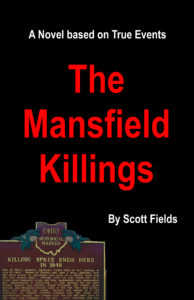 at they were shot in the head. What happened next?”
at they were shot in the head. What happened next?”
“One of the policemen saw me and yelled at me to get the hell out of here. I took off running thinking they were chasing me.”
“Daniels declared that they did not rape twenty year old Phyllis, and yet the bodies were found completely nude. The first coroner stated that there was no evidence of rape and yet the coroner at Daniel’s trial stated that she had been raped. Why do you think Daniels would admit to everything but deny raping Phyllis?”
“I’m not sure,” said Roger. “I personally think he did it. Back in those days, murder was one thing. Rape was another.”
Small talk followed, and soon we said our goodbyes. I did manage to get his phone number and address, because I have many more questions for him.
_______________________________________
The Mansfield Killings now at this special publisher’s discount price of $12.99 (List $14.99).
Publication Date: December 3, 2012
ISBN 10 – 0982993137
ISBN 13 – 978-0-9829931-3-2
Binding Type: US Trade Paper
Language: English
By MICHAEL JOHNSON
Novels about love affairs outside of marriage are a genre unto themselves and I try my best to avoid them. John Updike made a career of these stories anyway, so what’s left to say? Yet once in a while a new writer emerges with such sharp sensibilities, such descriptive powers, and such a rich story that I am forced to reconsider.
Mary L. Tabor is such a writer, and her new book, “Who By Fire” (Outer Banks, $17.95), launched a few weeks ago to a full house in a Washington, D.C. bookshop, kept me turning pages to enjoy the careful prose, the fascinating digressions and most of all the unspooling of the story.
To my mind, the story is the fire in the relationships. The ice is Ms. Tabor’s masterly control of the complex plot. The reader begins to suspect what is to come as hints are dropped along the path toward the climax. This book is hard to put down.
“Who By Fire” is a near-surgical dissection of the turmoil and pleasures that straying couples experience – and the effect on the betrayed.
Ms. Tabor takes the time to develop characters so that you care about what they are going through. She finally kills off Lena, the woman who succumbed to her lover’s charms, and she does it abruptly after setting the scene: “And then she died.”
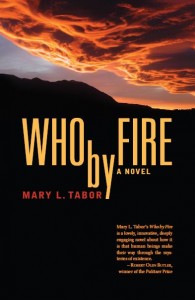 Mary Tabor is a writer who likes to say it is never too late. She started publishing her prose at age 60 and already has to her credit a frank memoir of her life and marriage entitled “(Re)Making Love: A Memoir.” Her best short stories are collected in “The Woman Who Never Cooked.”
Mary Tabor is a writer who likes to say it is never too late. She started publishing her prose at age 60 and already has to her credit a frank memoir of her life and marriage entitled “(Re)Making Love: A Memoir.” Her best short stories are collected in “The Woman Who Never Cooked.”
She takes stunning risks in her new novel, the most impressive being her decision to write from the perspective of Lena’s husband, Robert, the man who suffers as his emotions of widowhood and awareness of his dead wife’s affair mingle in his thoughts.
Jay McInerney tried the gender-swap in “The Story of My Life” but he never let you forget he was trying to sound like a girl. Ms. Tabor glides into the male perspective effortlessly and stays there.
As the narrator “Robert” reconstructs the story of his life, Ms. Tabor makes him recall what he had failed to see before his wife’s death:
“If I’d seen them on the street, I’d have known because they would have done the sorts of things that reveal: They would have passed between them a bottle of water, their hips would touch, as if by accident, when they walked; they wouldn’t touch with their hands the way safe lovers do, but an observant eye could catch both the intimacy and the caution—and know. It was when she was dying that I knew. It was the way he touched her head before he left her bedside. What I thought was an obligatory visit from a colleague changed with one gesture.”
I was propelled through this book most of all by the taut language, the dialogue and the perfect sentences, honed in the author’s years as a teacher of creative writing at George Washington University, Ohio State and University of Missouri, among others. From the outset, you are in the thrall of a confident storyteller.
Her digressions take the reader into worlds she clearly knows — the detail of the Dead Sea Scrolls, the art world, the finer points of classical music, quantum physics and the business of psychology. She has her psychologist character Evan say at one point:
“I’m beginning to think I give more comfort than cure. Not such a bad thing but not what I expected. I feel like an old broom—cleaning up, moving around the messes in people’s heads, never sure if that’s all I’m doing.”
She will throw odd words at you and expect you to understand. The apple trees are espaliered. The plants are pleached.
I was drawn into the suspense when the lovers realize that the betrayed wife is returning home early. With cinematic realism, the lovers find themselves about to be discovered when they hear the key in the lock:
“A familiar sound, merely a click, but they thought, almost as if their minds were one, that they heard the separate mechanisms of the lock moving, tumbling like thunder.”
This reader quickly turned the page to watch them awkwardly lie their way out of trouble.
Mary L. Tabor tells me she is at work on a new novel. Somehow she finds time to do a weekly internet interview about writing, broadcast on Rarebirdradio.
It is never too late, as she would be the first to tell you.
 Who by Fire is told by Robert, Lena’s husband, as he attempts to understand her affair with Isaac, an affair that he has become aware of after her death. He imagines the story of his wife and her lover.
Who by Fire is told by Robert, Lena’s husband, as he attempts to understand her affair with Isaac, an affair that he has become aware of after her death. He imagines the story of his wife and her lover.
Robert the narrator is trying to know himself in the story he is writing as he tells his imagined version of his wife’s betrayal. The story becomes a paradoxical tale of his own undoing that he comes to realize by telling it.
In the epigraph to the novel, Robert says, “Life has a way of raveling. Story discovers how it happened. That is the fiction.” This is the reader’s first introduction to Robert’s persona, a man who must control the world he inhabits. The telling of the story as he imagines it, reveals more than he would have wished and as this occurs, his telling moves into real time, for there is no way for him to deal with what he discovers except to report what is actually happening versus what he has imagined.
Pre-publication praise:
Michael Johnson, foreign correspondent and writer for The International Herald Tribune, American Spectator and The Washington Times: Mary Tabor’s captivating story of love and death tackles the tangle of relationships within and outside the bonds of marriage. Her eye-popping knowledge of men’s and women’s behavior is effortlessly recounted as couples face their anguished choices. Set in a world of art, music, anthropology and science, her novel enlightens the mind while it stirs the emotions. She does all this in a confident style of prose that ranks her alongside the finest novelists working today.
Paperback: 248 pages
ISBN: 978-0-988299-314-9
Language: English
Product Dimensions: 5.5 x 8.5 inches
Publication Date: November 2012
Outer Banks Publishing Group Author Ron Rhody will be one of the guest authors at The Paul Sawyier Public Library at its fifth A Gathering of Authors on Saturday, August 25th from 10:00 a.m. to 3:00 p.m.
Ron will introduce his next THEO novel, the third in a series, at the library.
The Gathering is a celebration of the rich tradition of literature in Kentucky.
This event features gifted writers who play an integral role in the library’s service to readers throughout Frankfort, KY and the Commonwealth.
Authors from across the Bluegrass come to sell and sign their works as well as carry on a dialogue with attendees about their craft. The Gathering is an excellent opportunity to meet some of your favorite authors in a casual atmosphere. Stop by and chat with the participants, and be sure to pick up their newest releases!
This event is free to the public and open to all ages. For more information, please contact Diane Dehoney at (502)352-2665×108 or Mark Kinnaird at mark@pspl.org.